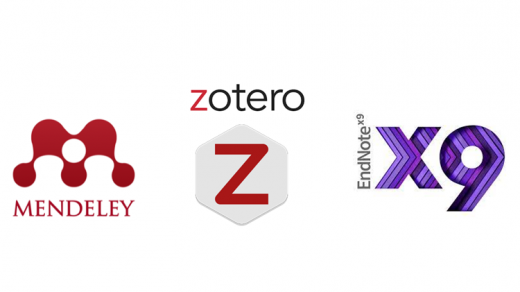In the increasingly globalized world of academic research, scholars are no longer confined by the linguistic boundaries of their own disciplines or countries. Modern scholarship in the humanities, cultural studies, and linguistics often involves texts, authors, and theoretical frameworks originating in multiple languages. An essay written primarily in English may quote García Márquez in Spanish, cite a Confucian text in Chinese, or reference a French philosophical treatise—all within the same work.
While this linguistic diversity enriches intellectual exchange, it also introduces significant stylistic and formatting challenges. How should a writer punctuate a Spanish quotation in an English-language paper? Should Chinese characters be retained or transliterated? How does one structure a Works Cited entry that contains multilingual elements such as translated titles or publishers in non-Latin alphabets?
The Modern Language Association (MLA) 9th edition provides general principles for handling these cases, emphasizing clarity, consistency, and reader accessibility. However, it does not prescribe rigid rules for every multilingual situation, recognizing that cultural nuance and context often require authorial judgment.
This essay explores how MLA 9 can be applied effectively in multilingual academic writing, focusing on (1) integrating non-English quotations, (2) formatting multilingual titles and headings, (3) managing transliteration and translation, and (4) constructing bibliographies that respect linguistic diversity. Examples will be drawn from works in Spanish, Chinese, and French, illustrating how multilingual scholarship can remain both elegant and precise within MLA conventions.
Quotations, Translations, and Linguistic Integrity
Quoting foreign-language sources is one of the most visible signs of a multilingual paper. MLA 9 encourages writers to preserve the original wording of the source whenever possible to maintain its linguistic authenticity. However, it also recognizes that many readers may not understand the language of the quotation, so a translation must accompany it either within the text or in a note.
Direct Quotations in Non-English Languages
When quoting a passage in Spanish, French, or Chinese, MLA suggests presenting the quotation in the original language, followed by an English translation in brackets or in a note. For example:
García Márquez writes, “No hay medicina que cure lo que no cura la felicidad” [There is no medicine that cures what happiness cannot].
Here, the original quotation retains its diacritical marks and punctuation, preserving the rhythm and tone of the Spanish. The translation is provided immediately after in brackets for accessibility.
For Chinese quotations, the same principle applies, but additional care is needed due to character encoding and font compatibility. If a reader might not have access to Chinese fonts, the writer may include a pinyin transliteration in parentheses:
孔子曰:“學而時習之,不亦說乎?” (Xué ér shí xí zhī, bù yì yuè hū?) [Confucius said: “Is it not a pleasure to study and repeatedly apply what one has learned?”].
This approach preserves the linguistic authenticity of the source while maintaining readability.
Block Quotations and Bilingual Presentation
When a long passage (more than four lines) in a foreign language is quoted, MLA formatting requires it to be indented as a block quotation, without quotation marks. If the translation follows immediately after, it can appear as a separate paragraph in standard double-spaced format. The translation should be clearly attributed—either as the author’s own or as an existing published translation.
For example, if the translation is your own, you may write: Translation mine. This clarification upholds academic transparency and acknowledges interpretive responsibility.
Blending Languages Within Sentences
In multilingual papers, writers often switch between languages in a single sentence, especially when discussing untranslatable terms like duende (Spanish) or ren (仁, Chinese). MLA 9 recommends italicizing isolated non-English words or phrases unless they have entered common English usage (e.g., café, déjà vu, kung fu). However, if the same foreign term appears frequently, italics should be dropped after its first occurrence, indicating its integration into the text.
Thus, a writer might say: The Chinese concept of ren (仁), often translated as “humaneness,” remains central to Confucian ethics. After the first definition, subsequent references can simply use ren without italics.
Formatting Multilingual Titles, Headings, and Citations
A multilingual paper often requires titles and headings in more than one language—either to mirror the sources cited or to clarify the scope of discussion. MLA 9 permits this as long as consistency is maintained across the document.
Titles and Section Headings
If a title contains both English and non-English words, capitalization should follow the rules of the dominant language of the paper—typically English. Diacritics, accents, and original punctuation must be preserved.
For example:
Memory and Identity in “Cien años de soledad”
Les voix du silence: Re-reading French Existentialism in Translation
Section headings should also retain linguistic accuracy while remaining accessible. If a heading in another language requires explanation, an English subtitle may follow, separated by a colon.
Capítulo Uno: Origins of Magical Realism
This method allows for a bilingual presentation without sacrificing clarity.
Multilingual Works Cited Entries
MLA 9’s “universal core elements” model simplifies multilingual citation by providing a flexible structure: Author. Title. Container. Contributor. Version. Number. Publisher. Date. Location. Each element is written in the language in which it appears in the source, while punctuation and formatting follow MLA English norms.
Thus, a Spanish novel cited in an English paper would appear as:
García Márquez, Gabriel. Cien años de soledad. Editorial Sudamericana, 1967.
If an English translation was used, it would read:
García Márquez, Gabriel. One Hundred Years of Solitude. Translated by Gregory Rabassa, Harper & Row, 1970.
For Chinese or French works, titles in non-Latin scripts are retained as long as the publication is recognizable to the intended audience. A translation or transliteration may follow in brackets:
孔子 [Confucius]. 论语 (The Analects). 北京大学出版社 [Peking University Press], 2015.
In this example, the original Chinese characters, pinyin transliteration, and English translation coexist, reflecting the multilingual nature of the research.
Comparative Table: MLA Guidelines for Multilingual Elements
| Element | English/Spanish Example | Chinese Example | French Example | Key MLA Principle |
|---|---|---|---|---|
| Quotation | “El amor en los tiempos del cólera” [Love in the Time of Cholera] | “道可道,非常道。” (Dào kě dào, fēi cháng dào.) [“The way that can be spoken is not the eternal Way.”] | “L’existence précède l’essence” [“Existence precedes essence.”] | Preserve original; provide translation or transliteration |
| In-text Citation | (García Márquez 22) | (Laozi 3) | (Sartre 14) | Same parenthetical format across all languages |
| Work Title in Bibliography | Cien años de soledad / One Hundred Years of Solitude | 论语 (The Analects) | L’être et le néant (Being and Nothingness) | Italicize titles; include translations or pinyin as needed |
| Notes and Translation Acknowledgment | “Translation mine” or credit published translator | Same format | Same format | Maintain transparency of translation source |
The table above demonstrates MLA’s adaptability. Its flexible core-element structure allows scholars to present multilingual materials without sacrificing uniformity. Unlike APA or Chicago, which often require transliterations for all non-Latin scripts, MLA permits a more inclusive use of original alphabets—recognizing linguistic diversity as part of scholarly authenticity.
Transliteration, Diacritics, and Multilingual Typography
One of the most challenging aspects of multilingual formatting involves transliteration and typography. MLA does not require transliteration for languages written in non-Latin scripts if the original characters can be accurately displayed and are relevant to the audience. However, when transliteration improves accessibility, it should follow a recognized academic standard—for example, Hanyu Pinyin for Chinese or ISO 9 for Cyrillic alphabets.
When to Transliterate
If a paper targets an English-speaking audience unfamiliar with Chinese or Arabic characters, transliteration ensures comprehension. For instance:
孟子 (Mèngzǐ) argues that human nature is inherently good.
Here, both the original Chinese and its pinyin transliteration are provided. This dual presentation helps readers associate pronunciation with meaning.
Conversely, when addressing bilingual audiences or specialized readers (e.g., sinologists, linguists), transliteration may be omitted altogether, as they can read the original script directly.
Preserving Diacritics
MLA 9 explicitly requires retention of diacritical marks—accents, tildes, umlauts—in all non-English names and titles. Thus, García Márquez, Camus, and Chén Dàomíng must all preserve their native orthography. Writers should ensure that their document uses a Unicode-compatible font (e.g., Times New Roman, Arial Unicode MS) to prevent diacritical distortion.
Omitting diacritics not only misrepresents linguistic accuracy but can also alter meaning: año (year) and ano (anus) in Spanish, for instance, demonstrate how critical accents are to clarity.
Punctuation and Quotation Marks
In multilingual contexts, punctuation can vary by language. Spanish and French use inverted or non-English punctuation marks (“¿”, “¡”, « », etc.). MLA allows writers to retain original punctuation within quotations, as long as consistency is maintained in English framing. For example:
In Don Quijote, Cervantes writes, “¡Oh Dulcinea del Toboso!” preserving the inverted exclamation to convey tone.
If quotation marks differ from English norms, they should be retained inside the quotation, not replaced, since they form part of the source’s typography.
Constructing a Multilingual Works Cited List
A multilingual Works Cited list embodies the global scope of contemporary scholarship. MLA 9’s flexible model makes it possible to integrate sources from multiple linguistic traditions into a single, coherent bibliography.
Ordering and Alphabetization
Entries are alphabetized according to the Romanized form of the first author’s name, even if the source title is in another script. For instance, a Chinese author like 孔子 (Confucius) would appear under “K,” not under Chinese character order. If no Romanized name exists, transliteration should be used to determine alphabetical placement.
Mixed-Language Sources
When citing translations or bilingual editions, both the original title and translation may appear, separated by a slash or placed in brackets. For example:
Camus, Albert. L’étranger (The Stranger). Translated by Matthew Ward, Vintage International, 1989.
This format clearly conveys that the source is a translation and credits both the original and the translator, aligning with MLA’s emphasis on authorial transparency.
Editors and Translators
In multilingual projects, translators, editors, or compilers often play a vital role. MLA allows the use of additional contributor labels such as “Edited by,” “Translated by,” and “Compiled by.” For example:
Laozi. Dao De Jing. Translated and edited by Roger T. Ames and David L. Hall, Ballantine Books, 2003.
These contributors appear after the title, reflecting their interpretive authority while maintaining a consistent citation pattern across languages.
The Ethics and Aesthetics of Multilingual Scholarship
Beyond mechanics, multilingual citation carries ethical and aesthetic dimensions. To cite a work in its original language is to acknowledge its cultural origin, avoiding the homogenizing effect of translation-only scholarship. At the same time, providing accessible translations ensures inclusivity, allowing broader audiences to engage with diverse intellectual traditions.
MLA 9 strikes a balance between these two goals. It encourages writers to honor linguistic authenticity while maintaining global readability. A paper written in English but rich with quotations in Spanish, Chinese, or French becomes not just an academic document but a microcosm of cross-cultural dialogue.
Moreover, multilingual formatting resists linguistic hierarchy. In many scholarly traditions, English has become the default medium of publication, sometimes overshadowing non-English contributions. By adhering to MLA’s multilingual guidelines, writers demonstrate respect for linguistic diversity and intellectual plurality—an ethical commitment consistent with the humanities’ broader mission.
In the classroom and the digital age, this inclusivity extends to multilingual digital sources: podcasts, videos, and social media in different languages. MLA 9 accommodates these through flexible “container” elements and URLs. For example, a Chinese-language documentary on YouTube or a Spanish-language academic podcast can be cited with both original and translated titles, ensuring both accuracy and accessibility.
Conclusion
Multilingual scholarship represents one of the most dynamic frontiers of modern academia. As research becomes more global, citation systems must evolve to reflect not only new media but also new languages. MLA 9 provides an adaptable framework for integrating multilingual materials into academic writing without sacrificing clarity or rigor.
By maintaining original-language quotations, preserving diacritics, using transliteration judiciously, and constructing inclusive Works Cited entries, scholars can honor the linguistic and cultural integrity of their sources. The result is not merely stylistic correctness but an act of intellectual respect—recognizing that knowledge itself is multilingual.
In a world where English dominates scholarly communication, MLA’s flexible yet principled approach offers a model of inclusivity. It enables writers to weave English, Spanish, Chinese, French, and other languages into a coherent narrative that celebrates diversity while upholding academic precision.
Ultimately, formatting is not an obstacle to multilingual scholarship but its invisible architecture—a way of building bridges between languages, disciplines, and readers. MLA’s principles remind us that every accent, every ideogram, every unfamiliar word enriches the texture of thought and expands the boundaries of understanding.




